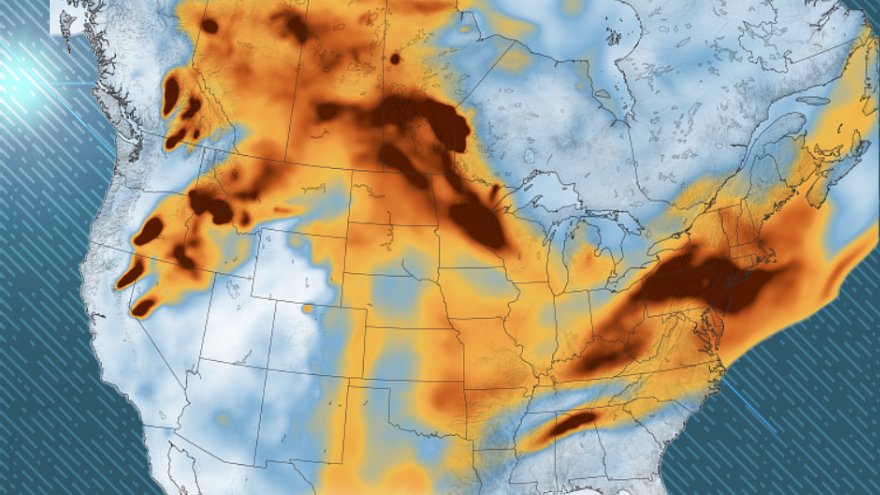Smoke from multiple wildfires in Canada has once again reached the United States, forcing local governments to warn the public to take precautions to avoid adverse health effects.
Over 120 million people are under extreme weather alert across the Mid-Atlantic, Midwest, and the Ohio Valley as well as portions of the Southeast.
There are reportedly more than 490 active fires burning across Canada, with 249 labeled “out of control.” Just over 150 are considered to be under control and 92 are being held. More than 8 million hectares have burned in 2023 alone. The Canadian Interagency Forest Fire Center has reported there have been more than 3,000 fires in Canada this year.
The provinces of Quebec and British Columbia have the greatest numbers of active fires with 107 and 105 fires, respectively.
Smoke from the fires has been drifting into the US for months, with particularly heavy periods in early June. At the time, communities across the East Coast reported decreased visibility and warned vulnerable populations to stay indoors. The smoke disrupted travel at LaGuardia Airport in New York and Newark Liberty Airport in New Jersey. Major League Baseball postponed several games scheduled to take place in East Coast cities as a result of the reduced conditions.
The federal government reports unhealthy air quality in upstate New York extending south through Pennsylvania into parts of Virginia as well as across the midwest from Illinois to West Virginia. Neighboring states as far north as New Hampshire and as far south as Georgia are considered to have moderate air quality.
“Sensitive groups of people are more vulnerable to #wildfire smoke, and this includes people with heart or lung disease, older adults, children and teenagers, minority populations, and outdoor workers,” tweeted AirNow, the public national air quality information organization. “Make outdoor activities shorter and less intense. It’s OK to be active outdoors when the AQI is Code Orange, but take more breaks. Watch for symptoms such as coughing or shortness of breath if you experience symptoms, go indoors and contact your health care provider.”
In addition to the smoke, many states are dealing with a heat wave that’s brought record-breaking temperatures. Texas is reported to be under a “heat dome” – a stationary high-pressure, warm air system. The heat is driving temperatures up throughout the Gulf Coast, Oklahoma and Kansas. The extreme heat is expected to add strain to the region’s power grid as residents try to stay cool.
Texas was predicted to have a week of heat “10-15 degrees above normal” on June 16. Several major cities, including San Antonio, Laredo, and Dallas, reported triple-digit temperatures as high as 112 degrees, per CNN.
The National Weather Service is currently predicting thunderstorms and possible hail over parts of Mississippi and the Ohio Valley as well as scattered showers over part of the North East through June 30.
